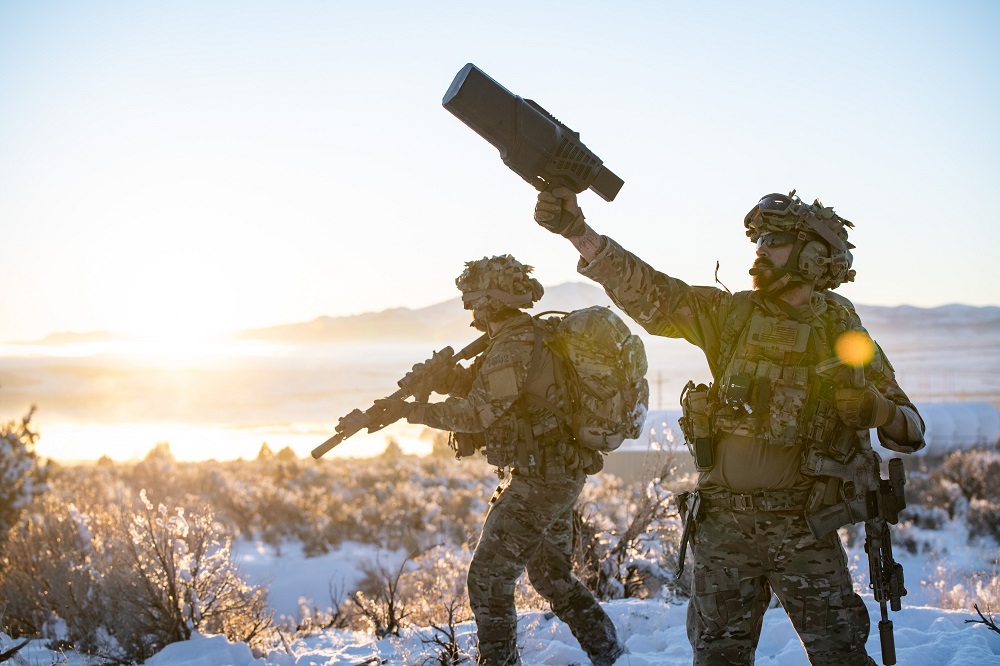
The drone threat is finally being taken seriously. Following the relentless devastation they have caused on the battlefield, combined with the endless ways they can threaten or disrupt civilian life—at airports, public events and jails, to name a few—defence agencies and authorities around the world are now evaluating their stance on what just a few years ago were discounted as harmless consumer gadgets.
But the warning signs have been clear for years. Back in 2020, drones arguably decided the Azerbaijan–Armenia conflict, in which the former used Turkish- and Israeli-made uncrewed aerial systems to cripple the latter’s heavy armour and artillery.
Fast-forward a few years and the Russo–Ukraine war has provided countless examples of the use and impact of drones. Both sides of the conflict are dealing with drones—either monitoring their movements, using them to drop explosives or sending them to kamikaze into their targets.
Outside the battlefield, cheap, store-bought drones have brought airports to standstills, disrupted major sporting events, threatened presidential elections and even been used to hack companies and critical infrastructure.
As with most things that are perceived to do harm, the instinct of many defence agencies has been to fight fire with fire—hurt it before it hurts us. Hard-kill capabilities are at the forefront, and there’s a rising appetite to use bullets and lasers to down drones that come too close.
Unfortunately, hard-killing drones is rarely effective. The German Flakpanzer Gepard anti-aircraft gun has been successful against the Iranian HESA Shahed 136, but it remains an exception, not the norm. And despite its usefulness in the instance of the Shahed, it still suffers ammunition resupply issues, uses ‘dumb’ bullets and, ultimately, will face new challenges as foes get smarter.
The reality is that the old-hat method of shooting at anything that poses a threat is extremely difficult when the target is a small object moving at 100 kilometres an hour in often unpredictable patterns. Many militaries have tried using small arms, but it almost never works unless the drones are extremely close and there are only a few of them.
A centrepiece of Ukraine’s defence against Russia is the use of soft-kill capabilities to defeat drones. Soft kill—or smart jamming—uses radio frequency instead of bullets and lasers. It can actively monitor for drones, unlike yesteryear’s sensors, and take them down using handheld devices without explosions.
Soft kill is also free of the restrictions of ammunition. Fragmenting rounds from large turreted weapons—typically of the 25- to 35-millimetre calibre variety—can down a few drones, but large amounts of ammunition are required to deal with just a few targets. Then there’s the issue of setting up and moving the turret, alongside the logistics of resupply. In a warzone, militaries don’t have the luxury of time, or ammunition to waste.
While soft-kill capabilities such as jamming can ‘light up’ on the enemy’s electronic warfare systems, firing kinetic rounds at a target is even more obvious to everyone around, and hence offers far less stealth and protection.
With the cost of manufacturing drones consistently dropping, the appetite for using them in swarms rises. China’s People’s Liberation Army, for example, has amassed an array of drones, including Chinese drone company DJI’s consumer-off-the-shelf units, which are available on demand. If Beijing declares war on Taiwan, hoping for bullets as a primary defence mechanism would be akin to relying on a BB gun to bring down a swarm of locusts. Taiwan might destroy a few, but the thousands of others would achieve their objective, especially if they were $200 drones strapped with explosives targeting expensive tanks and civilian hotspots with kamikaze-style attacks.
Even if, by some miracle, bullets and lasers become much more effective, there’s incredible scope for collateral damage. Shooting a drone carrying explosives or biological agents will trigger those payloads, and the bullets and lasers could hit unintended targets. Bullets need to land somewhere, which make guns and turrets unsuitable outside the battlefield, and a powerful laser pointing up could damage a satellite in orbit.
As well as having unlimited ammunition, radio-frequency smart jamming is primed to affect large, targeted areas, making it a stronger option against swathes of drones. It also comes with simplicity. Firing a smart jammer is far easier than discharging a firearm, doesn’t create panic in a crowded situation, and eliminates the risk of collateral damage—in fact, it doesn’t even damage drones.
Whether it’s in a war or in a civilian scenario, downing drones only solves one part of the problem. However, a drone that has been jammed remains intact, opening the door for retrieval and forensic investigation. This gives defence forces the ability to review data, including photos, videos, flights and location information to pinpoint operators. Autonomous units can also be managed by disrupting the satellite links, and then gathering crucial information about their origins.
As drones evolve and become even more prolific on the battlefield—and outside it, as part of grey-zone warfare—it’s crucial that tactics for dealing with them mature too. We don’t need to shoot down everything that might be a threat to us. And with so many gaps in hard-kill tactics, it’s crucial to get smarter about drone defence.

